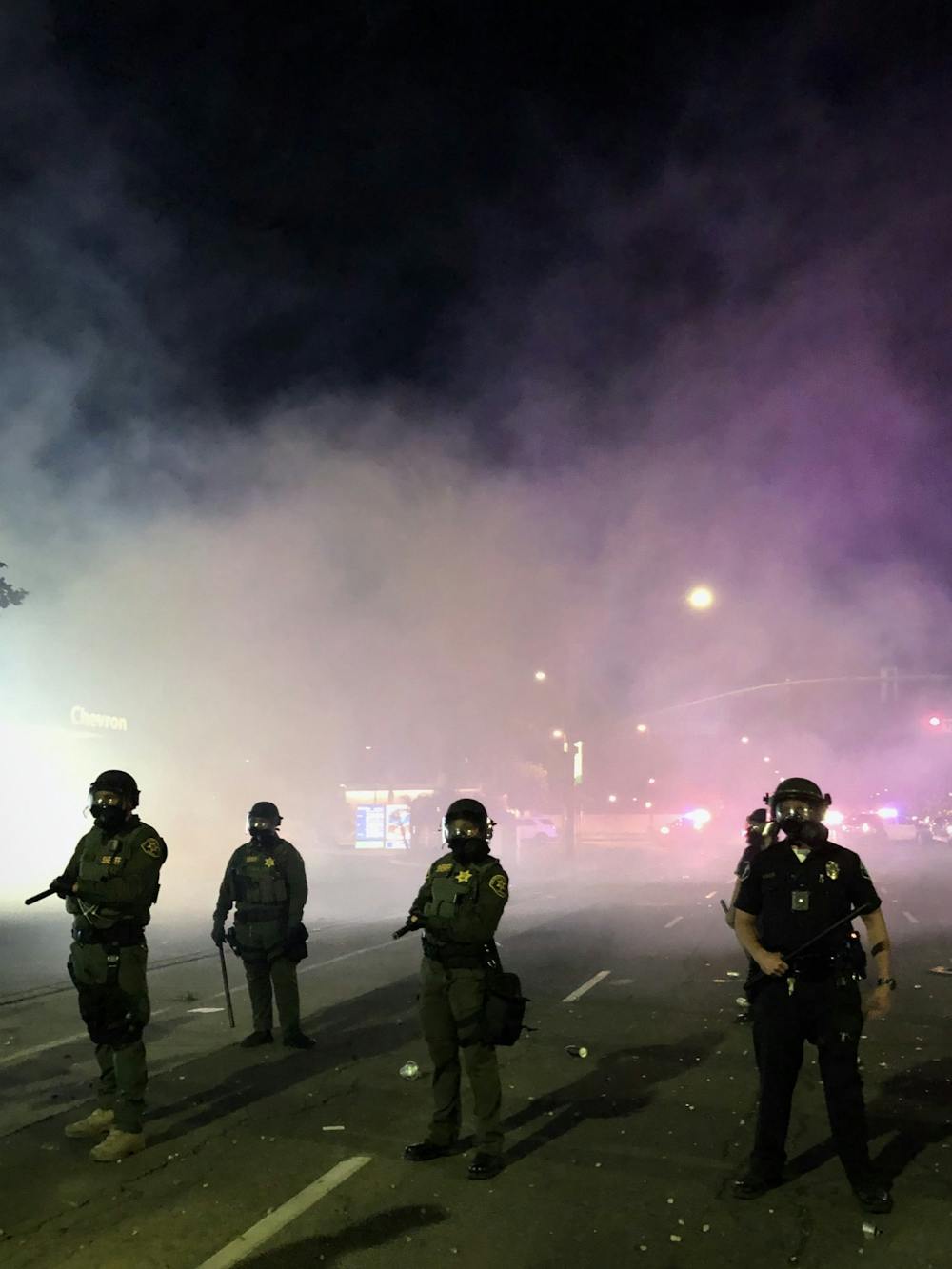
Penn students across the country have protested the murder of George Floyd.
Credit: Chase SuttonAs hundreds of thousands of protesters continue to march over the death of George Floyd, Penn students across the country are joining the worldwide movement for racial justice.
Floyd, an unarmed Black man, was killed on May 25 after a white Minneapolis police officer knelt on his neck against the ground for nearly nine minutes — sparking demonstrations against racial inequality and widespread advocacy for criminal justice reform.
Some Penn students, who have been away from campus since classes were moved online in mid-March, participated in the protests that occurred in their hometowns.
Rising College and Wharton junior Aissatu Diop said she attended a protest in Washington, D.C to be around other people who want to see changes in the criminal justice system.
“During quarantine, it can feel isolating [as a Black person] because it feels like I’m the only one who is feeling all this anger and frustration,” she said. “When you’re physically present around other people who are also feeling the same pain, it’s a unique feeling.”
Diop said that this was the first protest she attended in D.C. that had a heavy police presence, compared to the Women’s March and other Black Lives Matter protests in previous years. Police officers used intimidation tactics — such as advancing toward protestors — to get nonviolent protestors to leave, she said.
Diop added that she was disappointed that people were condemning the Black Lives Matter movement, including the protest she attended, because of instances of looting and vandalism amid protests that she said are largely non-violent.
“People are now calling looting and using violence ‘radical’ but when Colin Kaepernick was kneeling, people called that radical as well,” Diop said. “What level of radical do we have to reach for our voices to be heard? It took looting for people to actually listen but it shouldn’t have to take that level of anger and frustration.”

Rising College sophomore Claire Epstein said she attended a protest on Hollywood Boulevard and Vine Street in Los Angeles because she felt obligated to continue showing solidarity with the Black Lives Matter movement after exhausting all of the actions she could take from home, such as emailing representatives, signing petitions, and donating.
The protest Epstein attended was reported as Los Angeles’ largest anti-racism demonstration. Epstein said she believes the reason for the high turnout was because the protest was organized by Black Lives Matter L.A. and promoted by rapper YG.
Epstein said the protests did not become violent, and that there were not many police officers present during the demonstration.
She said the protest felt like a beautiful moment because everyone was chanting together while wearing masks and following coronavirus safety precautions, adding that it felt iconic to protest in front of famous buildings in Hollywood and to watch people graffiti Donald Trump’s star on the Hollywood Walk of Fame.
“It was different from the other demonstrations I went to not just because of the sheer mass of people but because of the energy,” she said. “This brought together so many people in Los Angeles so the feeling of unity was unparalleled.”
Rising College sophomore Lucia Gonzalez said she felt afraid at the protest she attended in Santa Ana, California because of the police officers and SWAT team present at the demonstration. She added that the police officers were equipped with riot gear, such as tear gas and batons.

“My skin is the best shield I have because I’m white-passing,” Gonzalez said. “I have friends who are immigrants on [Deferred Action for Childhood Arrivals] who wanted to come but couldn’t because if they got arrested, it would bar them from getting any government assistance.”
She said that Santa Ana received a lot of media attention when people protested the stay-at-home order in Huntington Beach and found it interesting to see how differently police officers handled the two protests. She added that police officers tried to stop the Black Lives Matter protest but allowed protestors to enter the closed beach, despite the fact that they were breaking the law by entering an “unauthorized area.”
Gonzalez said that because her hometown is predominantly comprised of Latinx and low-income communities, her community at home often deflects the Black Lives Matter movement to advocate for issues such as abolishing Immigration and Customs Enforcement.
She added that she would like to see her hometown address the colorism and anti-Blackness that exists within its community.
Diop said non-Black students at Penn need to be actively anti-racist, and that going forward, she hopes to see more actionable change and accountability.
“When you see racism, you need to actually speak out because it’s not enough for Black students to be the only ones advocating for themselves,” she said. “I’m tired of it being seen as something Black people need to struggle for because the problem is with white people perpetuating and upholding [racist] systems.”
The Daily Pennsylvanian is an independent, student-run newspaper. Please consider making a donation to support the coverage that shapes the University. Your generosity ensures a future of strong journalism at Penn.
Donate






